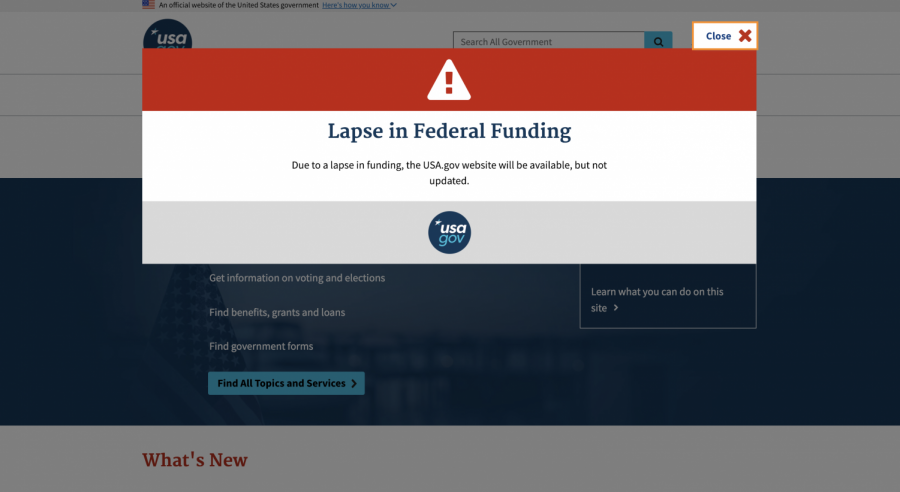Government shutdown continues
Photo USA.gov
The pop-up on USA.gov during the government shutdown
The US government has been in a partial government shutdown since Dec. 22 and if it continues for another week it will officially be the longest shutdown in history.
The shutdown was caused primarily after Congress refused to meet President Donald Trump’s demands and include $5 billion to build a wall along the southern border and for security funding in the long-term spending plan.
There were attempts by the House Democrats to end the shutdown without providing the funds for the wall; however, they were met by swift threats of veto power from the White House which left the partial shutdown in place with no end in sight.
With the ongoing government shutdown, hundreds of thousands of American government workers are paying the price as more than half are working without pay and many are on unpaid leave. Government services that are deemed “essential” such as law enforcement, free school lunches and mail delivery are still active. But, Homeland Security, Justice, State and Treasury departments and agencies such as the Environmental Protection Agency and NASA have been affected by the shutdown.
So what does this mean?
According to CNN, there are 380,000 federal employees that are furloughed because of lack of pay and 420,000 more in “essential” roles that are working without pay. This means that many federal employees are struggling to pay rent, buy groceries or pay bills. Those who worked during the shutdown can expect some compensation, but those who were furloughed are not guaranteed any pay.
Transportation Security Administration (TSA) employees are among those who have to work without pay and employees at airports across the country have called out sick in record high numbers since the shutdown began.
Many national parks are closed to visitors, while some have remained open with minimal staff. Park rangers and other personnel are not on duty to enforce laws and pick up trash, which has led to overflowing garbage left by visitors and the closing down of parks.
WHS junior Amanda Ludwig saw the effects of the government shutdown in national parks when she went to St. Louis, MO over winter break. “We did notice a difference [with the government shutdown] because a lot of the locals said the arch would be extremely crowded. However, there weren’t many people there because it was closed down,” said Ludwig.
Furthermore, because of the shutdown, Native American reservations haven’t been receiving food and are without access to health programs promised in government treaties. Treaties guarantee that Native communities receive services in exchange for their land, but with the shutdown, many of these funds have been halted. Tribes are falling back on their own money to keep programs running, but their funds can’t last much longer.
Senior David Sherwood believes the shutdown could have been prevented, stating, “The $5 billion [the president] is asking for would come from the American people, not Mexico. And this would be on top of the almost three weeks government workers have not been paid. We can have border security without a wall.”
However, with the shutdown now entering its third week and the President unwilling to compromise on the wall, it’s unclear when the partial shutdown will end.

